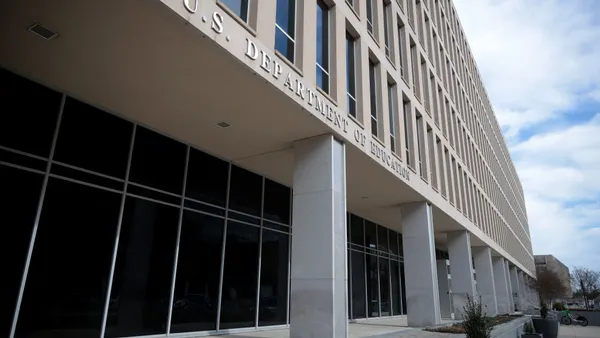Dive Brief:
- Assessment and policy experts are divided over the U.S. Department of Education's decision, via guidance released Monday, to keep in place statewide assessments with added flexibilities for the 2020-21 school year.
- Noelle Ellerson Ng, associate executive director of policy and advocacy for AASA, The School Superintendents Association, said the guidance is a "mixed bag" and should have provided more flexibility. Meanwhile, Scott Marion, executive director at the Center for Assessment, a nonprofit consultancy, said incomplete and misinterpreted data from pandemic-era state assessments could lead to "bad decisions."
- States can administer the tests remotely, although Marion said 40 to 45 states won't do that. California, he said, is the only state he knows "committed to remote test administration," with a few other states "dabbling with the idea."
Dive Insight:
As state leaders regroup to plan a path forward, district administrators are "at the mercy" of their decisions, said education policy expert Cara Jackson, an associate partner at Bellwether Education Partners.
Aside from the remote option, states can shorten assessments, offer multiple testing windows and extend testing until fall 2021, according to the Education Department. Many of the options, except online administration, would bring remote students back into buildings, although the guidance says students should not come in solely for standardized testing if health and safety conditions do not allow for that.
James Cantonwine, director of research and assessment for Washington's Peninsula School District, said that means jumping logistical hurdles, including scheduling and space constraints, to allow for safe conditions. In addition, Marion said schools may need testing, contact tracing and additional resources to successfully carry out their efforts.
"The devil's in the details," Marion said.
While proponents say the assessments will help administrators' decisions around how to allocate instructional time, target supports, and plan for summer, others familiar with district operations and assessments say that's not likely. For example, districts likely know which students need supports and will lean on interim benchmark data to inform instructional planning and interventions, said Jackson, a former evaluation specialist for Montgomery County Public Schools in Maryland.
Either way, district-level summative assessment data won't be available until at least the end of June if tests are administered in the spring, Marion said.
Statewide assessments still may inform state and district decisions around where to target supports, including funding, if a chunk of students aren't performing well.
Cantonwine said he's worried the adjusted tests — which may lead to "fuzzier data with a little less granular information" — could eat into instructional time. Still, he said he is looking forward to seeing whether the diagnostic results match up with the district's standardized test results.
"I just have some questions about how big a change that will be and how much use the data will have to teachers," Cantonwine said. "I think we're in a wait-and-see mode to figure out exactly how much value they'll have and how much we've lost."
While schools need to administer standardized tests, the Ed Department's new guidance doesn't tie testing to school ratings, students’ final grades and grade promotion decisions this school year.












